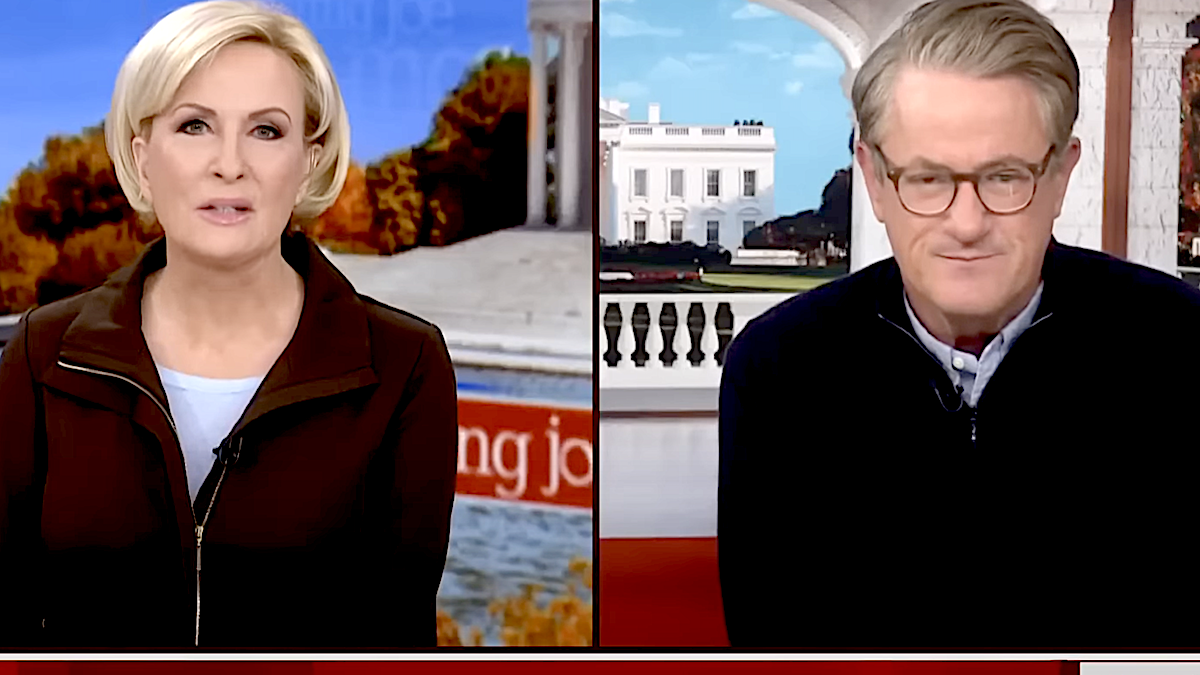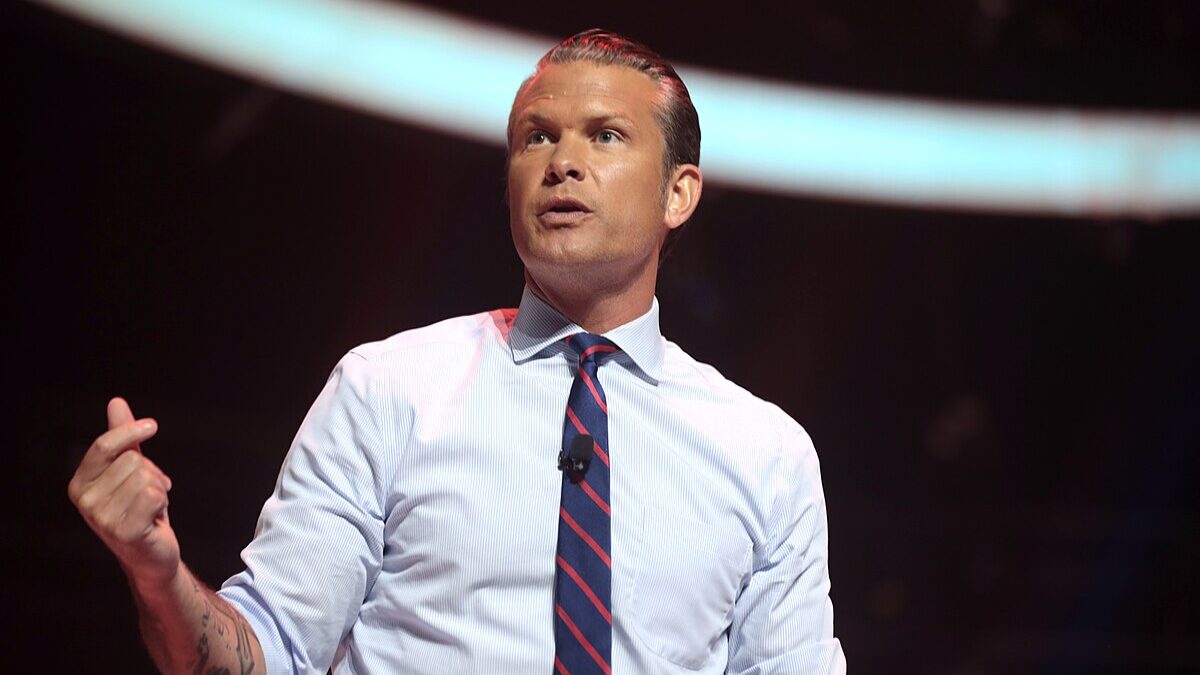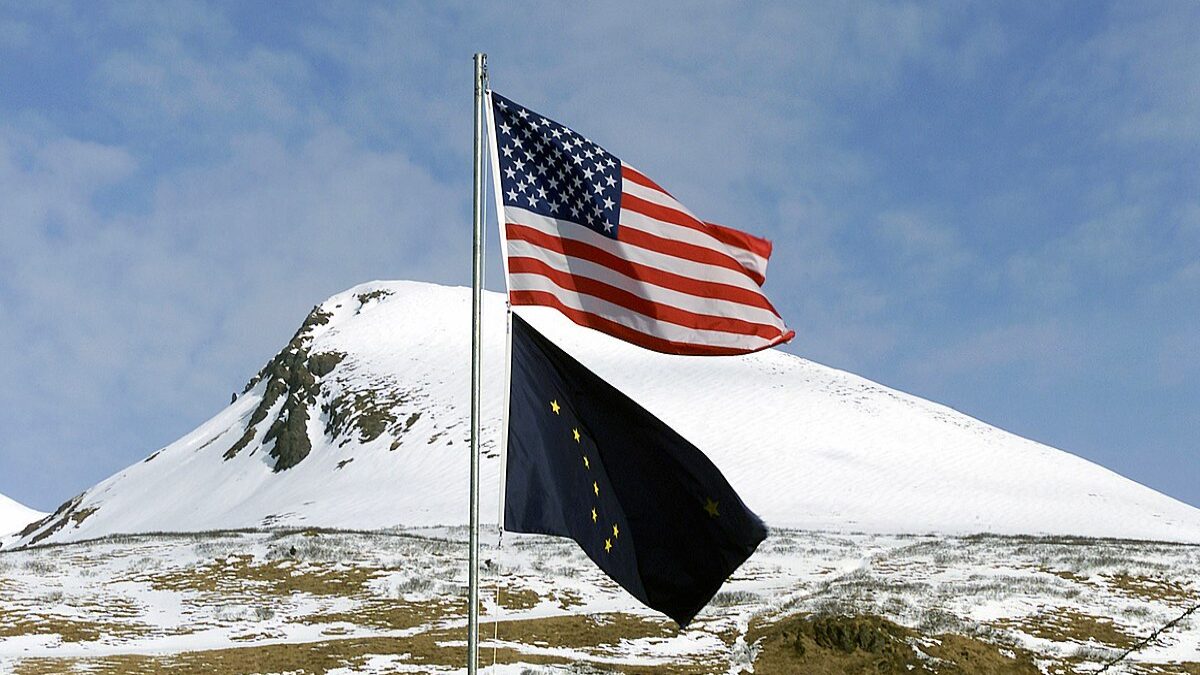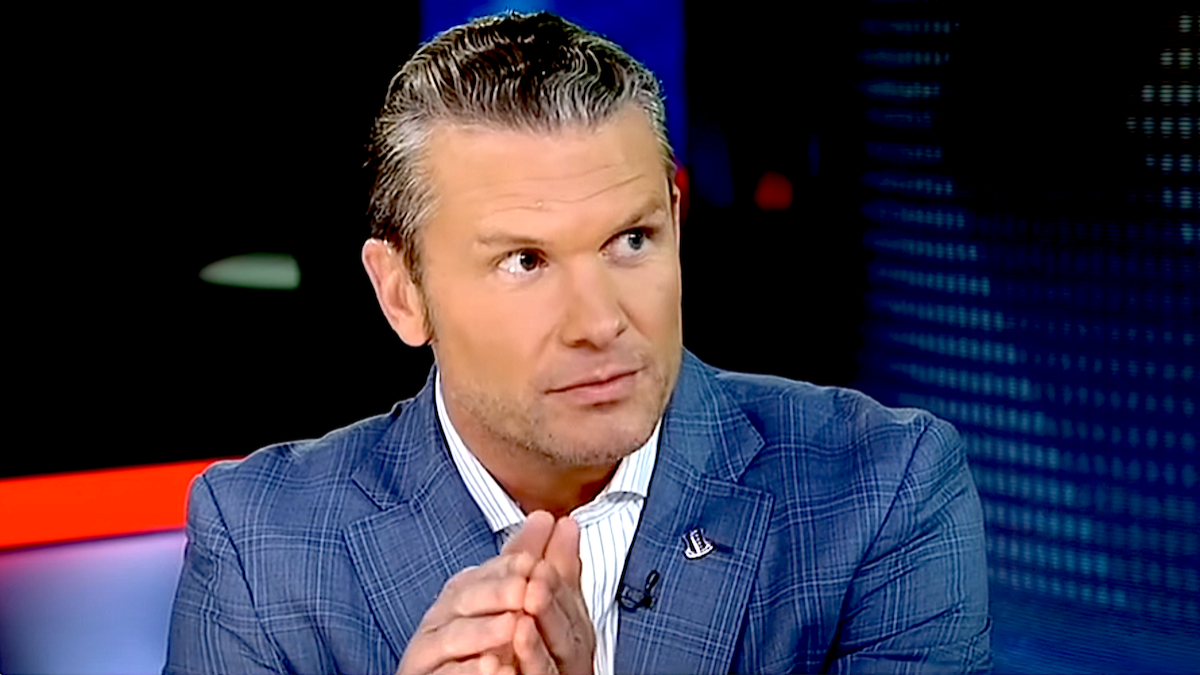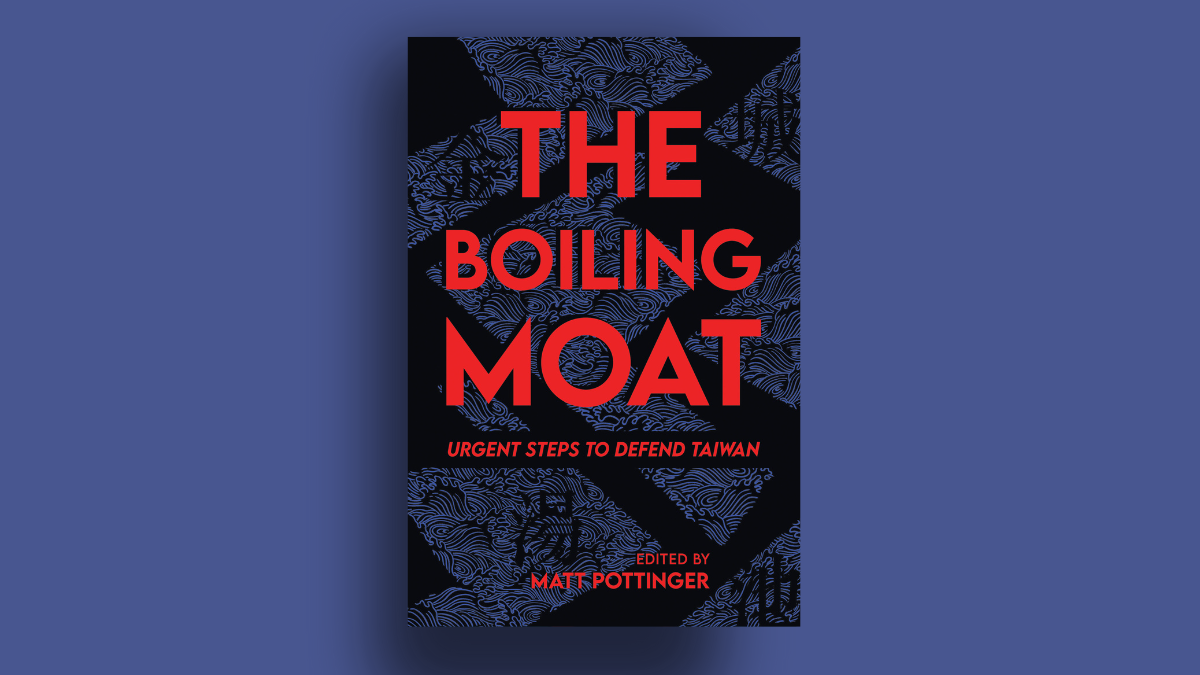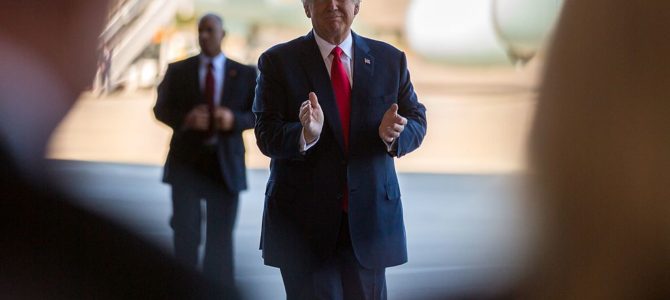
We are merely five months into the presidency of Donald J. Trump, and still in the midst of a fake news epidemic. It has grown more subtle and refined over time—gone is the regular cycle of industrial-scale media ineptitude and stupidity that began shortly after Trump clinched the presidency—but it is still chugging on like one of those old-fashioned Kalamazoo hand-pump railway cars: slow and quiet but somehow weirdly inexorable.
At a certain point we must ask ourselves why. We know the media are overwhelmingly liberal, deeply hostile towards Trump’s presidency and conservatives generally, and thus must feel rather strained and desperate when their arch-nemesis-apparent holds the White House and Republicans command an historic amount of political power throughout the country. Heady times will drive anyone batty.
Yet this still does not explain its relentless nature. Trump administration or no, majority Republican governor bloc or no, after a cursory freak-out it shouldn’t be that hard for journalism to return to square one. The news media have one job, and it is to report facts: factual things, things that are true, things that are the opposite of false. It should not be difficult to do this.
Yet for many of our media leaders, it apparently is. This, to the great discredit of the American fourth estate, is the media we have. What follows are 13 more examples of the post-election trend I tracked in an earlier article counting 16 others.
January 22: The Trump-Comey Bromance
On January 22, shortly after President Trump took office, author Richard Hine tweeted out a short video that he claimed showed Trump “literally [blowing] a kiss to James Comey at a WH reception for law enforcement.” Hine’s tweet was retweeted nearly 10,000 times. The media, naturally, glommed into it.
Among the media boosters of this story: ThinkProgress’s Judd Legum (retweeted nearly 1,600 times), The New Republic’s Jeet Heer (657 retweets), the Washington Post’s Gene Weingarten, the New Yorker’s Ben Taub, Slate’s Mark Joseph Stern, Vox’s Matt Yglesias, GQ’s Keith Olbermann (retweeted nearly 1,100 times), ThinkProgress’s Ian Millhiser, and many others. The news outlets that ran with this story, meanwhile, included HuffPost, Raw Story, The Week and others.
Unfortunately for all of the credulous media figures who took this story to press (or to tweet), it wasn’t true: audio of the exchange clearly shows Trump is not blowing a kiss to Comey, but rather saying his name. But a good, juicy fake news story is hard to quash: months after this fake news died down, the Washington Post’s Jenna Johnson reported on it as if it were credible.
February 1: Neil Gorsuch’s ‘Fascism Forever’ Club
On February 1 the U.K. Daily Mail reported that Supreme Court nominee Neil Gorsuch had “founded and led a student group” known as the “Fascism Forever Club” in high school. The story made waves at news websites and on social media: U.S. News and World Report, The Nation, AOL, the AV Club, Salon, and Vice all fell for it, while writers and media personalities such as Bill Maher, Heer, Gersh Kuntzman, Millhiser, and Olbermann all eagerly and credulously tweeted about it.
As it turns out, it wasn’t true at all: Gorsuch had simply included the club as a joke in his yearbook entry. Much of the media couldn’t simply wait to confirm this, however, leading to yet another hysterical fake news media cycle.
February 17: The Mobilization of the National Guard
On February 17, Garance Burke at the Associated Press published a bombshell report that claimed “the Trump administration considered a proposal to mobilize as many as 100,000 National Guard troops to round up unauthorized immigrants, including millions living nowhere near the Mexico border.” The AP story was shared 43,000 times on Facebook. The Boston Globe ran the story; so did CBS and the Chicago Tribune and the Los Angeles Times and Slate and Vice and countless smaller outlets. Social media went nuts.
Everyone took the AP at its word, which turned out to be a mistake: as Becket Adams pointed out at the Washington Examiner, the entire story was more or less bogus: the “proposal” was in fact an “early, pre-decision draft,” one never seriously considered by the Department of Homeland Security, it never mentioned “100,000 National Guard troops,” and never actually mentioned nationalizing the National Guard.
The AP quietly edited its story to correct these humiliating errors, although to this day there is still no official correction on the story’s webpage.
February 25: Kuwait’s Pay-to-Play at Trump Hotel
On February 25, NPR and Reuters reported that Kuwait’s ambassador was holding his annual National Day celebration at Trump International Hotel in Washington DC, an event that could have cost him upwards of $60,000. Trump was spotted at the same hotel, leading many in the media to believe he was there as part of some pay-for-play scheme with the Kuwaiti government.
Many in the media jumped on board this story and began circulating it widely. ThinkProgress’s Legum put out a series of tweets about the alleged scandal; these tweets were collectively retweeted thousands and thousands of times. Phillip Rucker, the Washington Post’s White House bureau chief, tweeted about it. New York Times and MTV writer Ana Marie Cox tweeted about it, and so did HuffPost’s Sam Stein tweeted it, as well.
One big problem, however: NPR and Reuters got their dates mixed up. The Kuwaiti celebration had actually been held the Wednesday prior to Trump’s visit. Most of these erroneous tweets were subsequently deleted as the mistake became clear, though Cox left hers up and simply issued a correction (her original tweet received 1,200 retweets; her correction received a grand total of ten).
April 11: The Jeff Sessions ‘Filth’ Scandal
On April 11, Attorney General Jeff Sessions gave a speech to border agents in Nogales, Arizona. The prepared remarks lambasted the “international criminal organizations that turn cities and suburbs into warzones, that rape and kill innocent civilians” and declared “It is here, on this sliver of land, where we first take our stand against this filth.”
The line about “filth,” which obviously refers to brutal criminal gangs, did not actually make it into the speech; Sessions left it out while talking. Nevertheless, the prepared remarks managed to circulate through the press, somebody pointed out the line about “filth,” and—predictably—media types began freaking out.
Daniel Drezner, a writer for the Washington Post, tweeted that Sessions “described illegal immigrants as ‘filth.’” His tweet received more than 5,300 retweets. Vox’s Yglesias claimed that Sessions vowed to “rid the nation of the ‘filth’ of Latin American immigrants.” Daily Kos writer Gabe Ortíz claimed Sessions’s speech went “full-on white nationalist.” Legum tweeted that Sessions had simply been talking about “immigrants.” So did ThinkProgress Senior Editor Ned Resnikoff.
To his credit, Drezner eventually issued a mea culpa in the Washington Post.
May 1: Ghosts of Billboards Past
On May 1, a fellow named Peter Brack claimed on Twitter that the president of the Philippines had received an invite to the White House around the same time that Ivanka Trump “model[ed] in an ad for POTUS’s new Tower in Manila.” The implication, of course, was that the two presidents were colluding in some pay-for-play scheme.
Brack’s tweet was retweeted thousands and thousands of times. Numerous media figures ran with the story: Jon Lovett (retweeted more than 1,500 times), Joy Ann Reid (retweeted just as much), Keith Boykin (more than 2,000 retweets), Matt Laslo, Audra Wolfe, Mark Follman, Michael Showalter, Victoria McGrane, Paul Farhi, Richard Lawson, Jonathan Wald, Aaron Vallely, many others.
It was a horrible scandal—except for the small, irrelevant detail that the billboard in question had come down years before and the photo was years out-of-date. Other than that, the outrage was well-placed and spot-on!
May 3: The DOJ Prosecutes a Woman for Laughing
On May 3, Vox’s German Lopez published a piece claiming that “the US Department of Justice is literally prosecuting a woman for laughing at Jeff Sessions.” It will not surprise you to know that this story went insanely viral: it was shared nearly 106,000 times on Facebook. A few days later at Vox, Lizz Winstead wrote that the woman was “arrested for the crime of laughing…during the confirmation hearings of Attorney General Jefferson Beauregard Sessions” (this netted an additional 20,000 Facebook shares).
A Mother Jones headline blared: “Woman Convicted After Laughing During Jeff Sessions’ Confirmation Hearing” (43,000 shares). Vanity Fair: “A jury just convicted a woman for laughing at Jeff Sessions” (40,000 shares). HuffPost: “A woman is on trial for laughing during a congressional hearing” (13,000 shares). NBC News: “Activist faces jail time for laughing during Sessions hearing” (13,000 shares). The New York Times: “A code pink protestor laughs over a Trump nominee and is convicted” (34,000 shares).
It once again took Adams at the Washington Examiner to throw some water on this hysterical fire. The foreman of the jury that convicted the woman pointed out that the woman “did not get convicted for laughing. It was her actions as she was being asked to leave. [The woman’s] comments as she was being escorted out caused the session to stop. It disrupted the session.” Indeed, the protestor herself, Desiree Fairooz, wrote an article for Vox in which she pointed out that other people had laughed at the hearing yet hadn’t been arrested—a strong indication that Fairooz’s crime was disruptive behavior, not simply “laughing.”
The media, propelled by sensational gender politics and profound paranoia about Sessions, could not be bothered to write up a nuanced or detailed take on this issue. Indeed, you can see this slyly dishonest tendency at Snopes.com: writer David Emery rated as “true” the claim that Fairooz “was prosecuted for disorderly conduct after she laughed” during the hearing. This is technically accurate, but deliberately and cleverly misleading—in other words, a normal media trick in the Age of Trump.
May 4: The Nonexistent Beer Party
On May 4, shortly after the American Health Care Act passed the House of Representatives, “lady reporter” Alexandra Jaffe tweeted that she had seen “cases upon cases of beer…rolled into the capitol on a cart covered in a sheet.” From this dubious tweet about an unverified beerfest, retweeted over 3,400 times, all hell broke loose.
Sally Kohn, seemingly rhetorically, asked if the beers were there “to celebrate the millions of Americans who will be hurt by [the GOP’s] new legislation?!?!?!?” The Center for American Progress-Action’s Igor Volsky, incredulous and flabbergasted, demanded: “THESE FRAT BOYS ARE GONNA F-CKING PARTY AFTER STRIPPING 24 MILLION OF INSURANCE?!?!” (Volksy’s tweet was shared more than 2,100 times.)
The feminist website Jezebel wrote that Republicans “[drank] beer” in the wake of the AHCA’s passage. “Republicans celebrated taking away Americans’ health insurance with cases of beer,” blared a headline at Mic. MSNBC’s Joe Scarborough called the news about the beer party “deplorable.” At RawStory, Brad Reed wrote that Republicans “plan massive beer bash as they take healthcare away from women, the disabled and the poor.” Yahoo’s Dan Devine was scandalized by the news. The Daily Dot reported that Republicans were ordering “cases upon cases of beer” to celebrate. Stephen Colbert condemned the GOP’s “beer bash.” Because they allegedly drank beer after the AHCA passage, Newsweek’s Kurt Eichenwald said that “it should be [the GOP’s] loved ones who die.”
All of this righteous anger might have been well-placed—if the beer bash had actually happened. As it turned out, the man who had wheeled the beers into the Capitol explicitly told Jaffe that the drinks were not for the GOP conference.
A fantasy story, flatly contradicted by the testimony of a knowledgeable witness, nevertheless sent media types into gales of howling outrage. Nobody bothered to fact-check the reports or even wait to see how the story developed. They just rolled with the anger, humiliating and debasing themselves in the process.
May 4: ‘Rape Is a Preexisting Condition’
Not to be outdone by the fake beer party hysteria, the Internet feminist machine decided to do the hysterics one better. On May 4, the feminist group Ultraviolet Action tweeted out a graphic that claimed the AHCA “made being a rape survivor a preexisting condition.” Media outlets ran with this claim, with astronomical social media shares quickly following: Mic (shared a staggering 248,000 times on Facebook), New York Magazine (13,000 shares), CNN (24,000 shares) and HuffPost (nearly 40,000 shares), among many others. The coverage was sensational, outrageous and terrifying.
It was also wrong. The Washington Post gave the claim four Pinocchios: “[T]his claim relies on so many factors — including unknown decisions by a handful of states and insurance companies — that this talking point becomes almost meaningless.” It was a falsehood from the start, but that didn’t stop prominent media outlets from running with it. Just another fake news event in the Age of Trump.
May 4: The Football Analogy Fiasco
May 4 was a busy day for the media. Sometimes the fake news incidents are a little less consequential and a little pettier. The media rounded out May 4 with a sneering little scofflaw over an analogy White House Chief of Staff Reince Priebus made after the passage of the AHCA in the House.
The Hill’s Molly Hooper tweeted out that, following the passage of the bill, Priebus claimed that President Trump “stepped up and helped punt the ball into the end zone.” The mangled metaphor—nobody punts into the end zone!—caused a number of outlets to titter with condescension: Slate, Vice, Talking Points Memo, Sports Illustrated, the New York Daily News, Fox Sports, and Mic all guffawed about Priebus’s idiocy. Even Colbert jumped on board.
Now, this may shock you, but it turns out that Hooper was wrong, and Priebus actually said “punch,” not “punt.” The writers who had so quickly and so eagerly mocked Priebus were forced to issue embarrassing corrections to their smarmy hit pieces.
May 10: The Fake Rosenstein Resignation Scandal
On May 10, the Washington Post reported that Trump’s Deputy Attorney General Rod Rosenstein “threatened to resign” after a “narrative” emerged that he was behind the firing of FBI Director James Comey. An anonymous source reported this allegation to the Post.
The news was spread far and wide: the New York Daily News, the Huffington Post, U.S. News and World Report, ABC News, Talking Points Memo, and other outlets all cited the Post’s claim. Media types like Kyle Griffin, Yashar Ali, Ruth Marcus, Adam Serwer, Tim Hanrahan, and Blake Hounshell all credulously tweeted the report.
As always, there was just one teeny weeny little problem with this story: it wasn’t true. Rosenstein has explicitly denied that he threatened to quit. In the Age of Trump, the media have become almost obsessively dependent upon anonymous sources to advance their stories. In many cases, as in this one, the source ends up being complete bunk.
May 10: Comey’s Russian Probe Resource Request
Also on May 10, the news media exploded with reports that, prior to being fired by President Trump, Comey had requested that the Justice Department devote more resources to the FBI’s probe into Russia’s election meddling. The unspoken implication, of course, was that Trump fired Comey to keep him from discovering the truth about Trump’s involvement with Russia.
The media went nuts. The New York Times, NBC News, Reuters, CBS, ABC, the Washington Post, CNN, Vox, CNBC, the Los Angeles Times, Politico, the Chicago Tribune, Fox News, The Hill, Business Insider, ThinkProgress, the Boston Globe, and many other news outlets ran with this story.
It is beyond the scope of one article to detail the staggering, almost biblical-proportions-level media response on Twitter, although a few examples should suffice. The story was tweeted by the Washington Post’s Ashley Parker, who received over 5,200 retweets, while CNN’s Manu Raju tweeted about it to the tune of 4,100 retweets. And those are just two reporters.
As is ubiquitous in the Age of Trump, these reports were inspired solely by the testimony of anonymous sources. The on-the-record sources, on the other hand, told a different tale: Department of Justice spokesman Ian Prior said the report was “totally false,” while acting FBI director Andrew McCabe (who was under oath, mind you!) affirmed that the FBI has “resourced” the Russian investigation “adequately.” He also claimed he was “not aware of” any request made by Comey regarding additional resources (also pointing out that Comey would have asked Congress, not the Justice Department, for additional resources).
There are three possibilities here: either Comey made the request but, inexplicably, nobody told his successor about it; Comey made the request, McCabe was informed, then perjured himself to cover it up; or Comey never made the request and it was a bogus story to begin with. Which do you think is the most likely? And which of these options sound like fake news?
May 20: The ‘Ivanka Charity’ Insanity
On May 20, Wall Street Journal reporter Rebecca Ballhaus tweeted, along with a WSJ story, that “Saudi Arabia and UAE pledge $100 million to Ivanka’s Women Entrepreneurs Fund.” This tweet was retweeted over 3,400 times. She followed with another tweet: “Trump pilloried Clinton for such donations to the Clinton Foundation on the campaign trail.” This tweet was retweeted more than 7,400 times.
Shortly thereafter, CNN national security correspondent Jim Sciutto retweeted Ballhaus’s initial tweet and claimed: “This is virtually identical to what Trump and others in GOP criticized Clinton Foundation for.” This garnered an astonishing 11,700 retweets (at press time). George Takei claimed that “the Saudis plopped $100mil into Ivanka’s charity.” Retweet count: 21,000 and growing. CNN contributor Ana Navarro tweeted: “Ivanka Fund got $100MM pledge from Saudis & UAE.” At the time of this writing, this tweet had been retweeted more than 43,000 times. Forty-three thousand.
It is rare to see a fake news event of this magnitude, perpetrated with such extreme ignorance and ineptitude, spread by people who should honestly know better but who, in the Age of Trump, simply do not care anymore. As Wall Street Journal editor Sohrab Ahmari pointed out (repeatedly, yet to no avail), the organization in question wasn’t “Ivanka’s Woman Entrepreneurs Fund” or an “Ivanka Fund” or “Ivanka’s charity,” and it wasn’t comparable to the Clinton Foundation in the slightest.
It was, rather, “a World Bank initiative that Ivanka is championing.” As NPR put it, the fund was merely “inspired” by Ivanka Trump: “While Ivanka Trump proposed the idea along with German Chancellor Angela Merkel, she is not involved with its operation.” Then too, NPR notes, “The World Bank fund…differs from the Clinton Foundation in some significant ways.”
Never the matter. In the Age of Trump, facts are unimportant to the media; reality is secondary to narrative-making. It did not matter to these veteran journalists (or Takei) that the fake news dreck they were peddling on Twitter was out-and-out false. With Trump in the White House, the media is increasingly apathetic towards, if not antipathetic to, the truth. “Ivanka’s Fund” sounds snappy and scandalous. Run with it. The retweets await.
There is a reason that polls regularly show an historically low amount of trust for the media: nobody, as a matter of course, should trust these people. This does not mean the media are always lying or always spreading fake news. Sometimes even pathological liars tell the truth, after all.
You shouldn’t always assume that the media are lying, nor should you assume that they are always telling the truth, particularly regarding the sensational headlines we see every hour of every day in the Age of Trump. A good rule of thumb moving forward in this brave new world is: if some shocking, scandalous, or crazy revelation makes its way across your newspaper, television, or web browser, take a deep breath. Investigate further. Verify the facts.
Sometimes the revelation will turn out to be true. Other times—many times—it will turn out to be false. You deserve to know which is which. You deserve to have the facts. You deserve to know the truth—even if the media often does its best to hide it from you.




